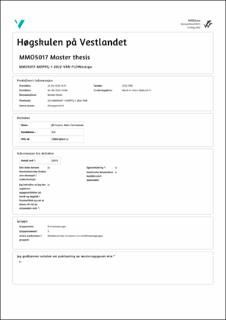| dc.description.abstract | The oil and gas fields on the Norwegian Continental shelf are getting older and older. Several oil and gas installations will have lasted their lifetime in the next few years. Some rigs have already been taken out of service, and the finishing work varies from project to project. As of
today, the principle is that each case is treated individually. For this reason, among other things, evaluating what should be done with the facilities, including subsea pipelines are time-consuming.
The topic for this thesis was motivated and carried out in collaboration with Equinor, Field Life Extension (FLX) department, which is also responsible for planning and execution of decommissioning projects in Equinor.
In most cases, pipelines remain on the seabed. For a few cases, they are taken ashore. The possibilities are many, but the method that should be used as a best practice have not been determined. Advisor Tor Inge Fossan suggested therefore writing about this topic. It is agreed that one of the most critical factors in the report will be that solutions must be environmentally friendly while at the same time minimizing the risk of adverse events in later times.
During the autumn of 2021, a pre-study was conducted as preparatory work for the master’s thesis. The primary focus of this study was to list possible philosophies for pipelines at the seabed when the service time of the offshore field is ended.
What laws and rules say about the issue is the basis for the ideas presented in this report. There are two very dissimilar methods, one of which is more relevant than the other.
The first proposal is to make the pipe corrode away. Several methods are proposed within this theme to accelerate the corrosion time, but calculations show that the corrosion time is slow. Methods are presented that, among other things, affect the anode/cathode ratio, and it is suggested to apply current or power to reduce the corrosion time.
The second idea deals with a completely different topic. Here it is proposed that a collapsed pipe will be to a lesser inconvenience to other sea users than an intact pipe. It can not be said with certainty that the pipe will collapse perfectly and thus be completely flat, so covering with gravel is also proposed. If it becomes necessary to cover the line afterward, it is considered more reasonable to cover a collapsed pipe. In this part of the report, both manual calculations and analyzes are performed in the ANSYS program.
Before a concluding discussion and conclusion, a comparison is made between existing and proposed methods. This comparison is made in terms of costs and emissions to air.
Keywords: Offshore cessation work, subsea pipelines decommissioning, corrosion, pressure calculations, finite-element modeling, ANSYS | en_US |

